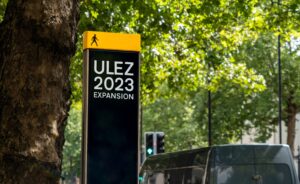Work is now underway on Greater Manchester’s new Clean Air Zone (CAZ).
The 10 Greater Manchester councils are under direction from the government to introduce the category C Clean Air Zone in order to ensure compliance with nitrogen dioxide (NO2) legal limits in the shortest possible time.
Now that all ten local authorities have approved the plan, the CAZ will be introduced on May 30 2022.
In line with this, the first Automatic Number Plate Recognition (ANPR) camera was installed on Vernon Street in Bolton in August, with around 850 more to follow to enforce any non-payment of daily chargers.
Greater Manchester has also secured more than £120m government funding to help local businesses, people and organisations to upgrade to cleaner vehicles so they can travel in the zone without incurring a daily charge.
Greater Manchester lead for Clean Air, Councillor Andrew Western, said: ‘It’s good to see a tremendous amount of progress being made to deliver the Clean Air Zone, which will include local roads in all ten Greater Manchester local authority areas.
‘We’re working hard to ensure we support affected vehicle owners move to cleaner vehicles so they don’t have to pay a daily charge. While the Zone launches in May 2022, there will be local exemptions in place to give businesses and organisations more time to apply for funding.
‘Our goal is to reduce harmful emissions. We want to help as many people and businesses as possible to be driving cleaner vehicles so we can all breathe cleaner air. Our clean vehicle funds service will launch in November and I’d encourage anyone who thinks they might be affected to get up to speed at cleanairgm.com, where they can sign up for regular updates.’
‘We have taken into account all the feedback we received during the 2020 Clean Air Plan consultation, alongside further evidence and modelling on the impact of Covid-19 and updated the final approved plan to reflect this.
‘The updated proposals aim to ensure that all motorhomes and campervans – that may look similar and have similar emissions – are treated equally, regardless of administrative vehicle categories. I look forward to hearing people’s views.’
Photo by Mihály Köles

















Leave a Reply